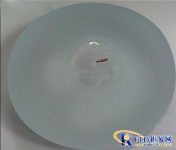
Manufacturers of breast implant devices use low-frequency RFID tags to identify implants
[ad_1]
The patient’s breast is implanted with an RFID tag embedded in the body, through which other detailed information such as the type and size of the model can be identified.
EL (Establishment Labs) is a manufacturer of breast augmentation and body shaping implants. It has begun to sell breast implants with built-in RFID tags. Obtain the relevant information of breast implants through RFID tags.The low-frequency RFID tag embedded in the body is manufactured by VeriTeQ.RFIDBreast implants have been put on the market in Europe. The first customer is a plastic surgery hospital in the UK, and it is expected to start using it next month.
The entire solution includes implants with embedded low-frequency RFID tags, handheld readers, and database software for storing data information (tag ID codes and other data). The solution is collectively referred to as the Motiva Implant Matrix Ergonomix system.

RFID breast implant
EL has been established for four years and has offices in Florida and Belgium, which provide RFID breast implants for plastic surgery hospitals. After a breast implant with an embedded RFID tag is implanted in the human body, the RFID reader reads the tag information through the skin tissue, including the code, model, and manufacturer of the implant. This information can ensure the authenticity of the implant and effectively monitor the occurrence of side effects. If the implant time in the patient is too long, the type, model, and expiration date of the implant can easily be lost. The use of RFID tags can effectively solve this problem.
EL provides a complete solution. Each breast implant has an RFID tag embedded in the gel, a VeriTeQ handheld reader and third-party data processing software. The database stores the serial number, manufacturer, production date, batch number, volume, size and other information of the implant. This product has passed the relevant product certification of an independent conformity assessment agency.
The passive RFID tags provided by VeriTeQ comply with the FDA’s human implant certification.
In September 2012, EL began to fully test the availability of RFID tags provided by VeriTeQ. Testing includes durability testing to ensure that the label can work normally in the liquid environment of the implanted human body and the high temperature environment of the production and processing process. The VeriTeQ tag contains a passive 134 kHz RFID chip that complies with ISO 11784 and 11785 standards; EL uses handheld RFIDReaderRead the tag information, in order to protect the privacy of the patient, set a special value for the reading distance.
To use the Motiva system, you need to enter a password to obtain the corresponding access rights. The patient needs to identify his implant. Her doctor holds the reader close to the skin to read the data, and the reader reads the unique ID code of the built-in tag. The doctor enters a string of valid authentication codes and can log in to the Motiva database through the reader to view the detailed information of the specific implant.

Currently, EL produces only a few breast implants with embedded RFID tags, and the company plans to add RFID technology to all of its implanted products within the next year.
After adopting RFID technology, women with breast implants can learn detailed information about body implants according to their needs, and their privacy is absolutely guaranteed.
In addition to being used in breast implants, this technology can also be extended to other implantable and reusable medical devices. Currently, EL is working with a vascular port manufacturer to use Q InsideSafety technology to identify chemotherapy ports.
[ad_2]



